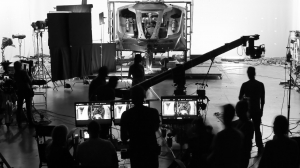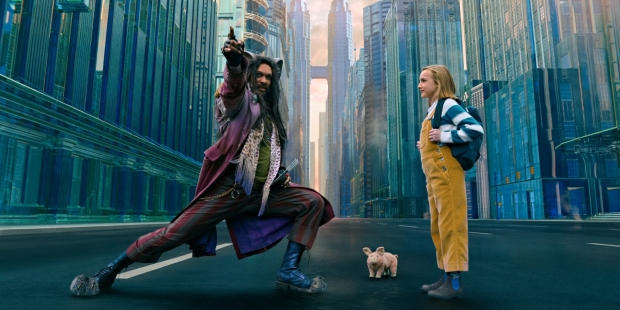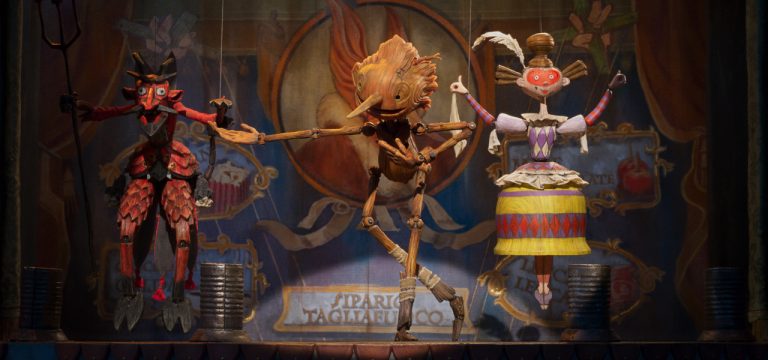And there is so much more Morris will do, as he and his team are now preparing for an Oceanus TV series, which will reboot the story from the beginning, giving more background into the lives of the characters, revisiting the point of catastrophe, and continuing where Oceanus: Act One left off.
Morris wrote the film’s screenplay in 2014 and completed the film in 2015, dedicating his masterpiece to the memory of iconic director Robert Wise, known for his work on films like Star Trek: The Motion Picture, Run Silent Run Deep, and The Day the Earth Stood Still, as well as famous romances like West Side Story and The Sound of Music. However, this year was the first time Oceanus had the chance to be presented to a large viewership. According to Morris, the reception has been just what he’d hoped for.
Victoria Davis is a full-time, freelance journalist and part-time Otaku with an affinity for all things anime. She’s reported on numerous stories from activist news to entertainment. Find more about her work at victoriadavisdepiction.com.

Morris first came up with the idea for Oceanus in 2011, borrowing inspiration from a slew of classic sci-fi films along with a desire to venture where few successful sci-fi films have dared to explore.
They had one film set, three actors, a budget of less than 0,000, and one glass of water to tell a 30-minute, futuristic sci-fi tale taking place almost entirely underwater.
As to Oceanus’ success as a short film, and its promise as a future television series, Morris credits the artwork that expanded this undersea world in a way plastic fish and tanks could never achieve.
FutureDude Entertainment’s Parallel Man: Infinite Pursuit is also available to view on YouTube and will be reimagined in an upcoming two-hour feature-length animated film, with a release to be announced at a later date.
“It’s an exciting thing to pull off,” says Jeffrey Morris, founder of production company FutureDude Entertainment and the writer behind Oceanus: Act One. “There are people making sci-fi films right now by throwing tens of millions of dollars into visual effects. But we’re showing that it can be done on a really modest budget.”
[embedded content]
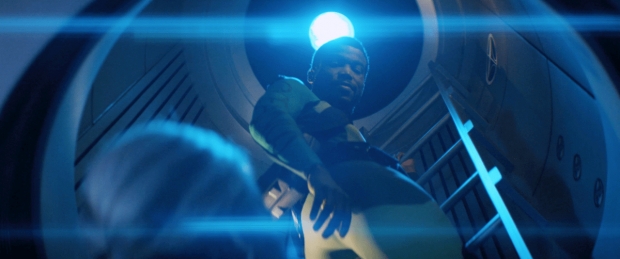
“I thought, ‘What if we could take the kind of energy and thoughtfulness and character development that you’d seen in something like the original Star Trek, but then put it underwater?’” says Morris, who produced Oceanus alongside Anne Marie Gillen, who was also his producer on Parallel Man. “I’m really thankful to Gunpowder & Sky and DUST giving us the chance to finally get this out to a broad audience.”

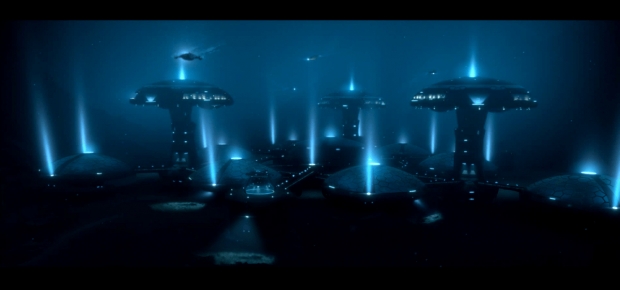
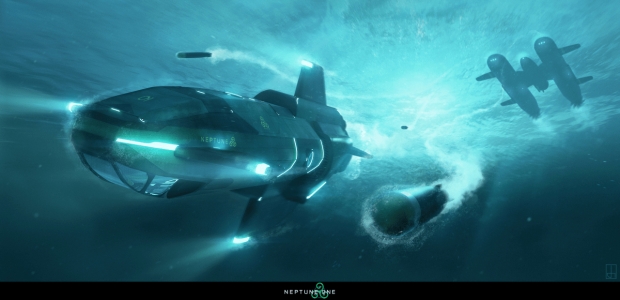
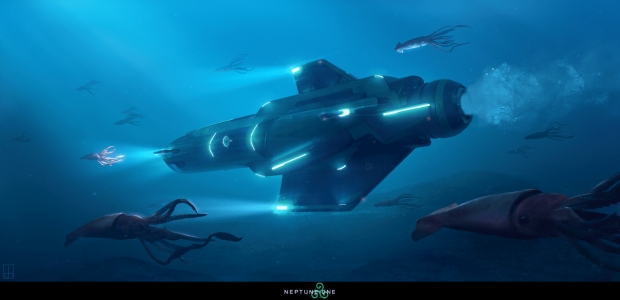
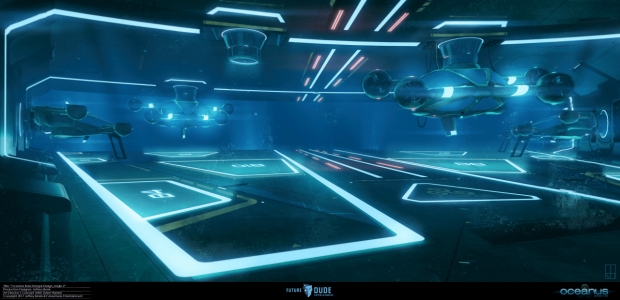


He continues, “We had these big mylar reflectors, and we shined lights on them, and I had the crew members just shaking them. That’s what created the shimmer that’s on the characters in the sub, which made it look like they were underwater. When you combine that effect with the CG water, you believe what’s in the scene. We knew that, if we could make those scenes work and make those believable, then we could pull everything else off. And we did.
Visit unknowns of the deep in Oceanus: Act One:
There are also scenes with Dr. Kendall viewing a meteor shower on the water’s surface before she must evacuate as large, fiery meteors plummet into the ocean right alongside her sub. All the computer screen graphics inside the submarine are also animated.
He adds, “And we made this movie years ago,” says Morris. “So with the technology available to us now, there is so much more we can do.”
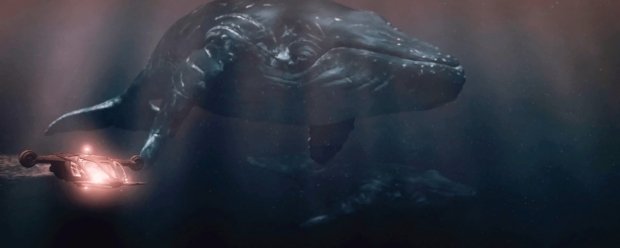

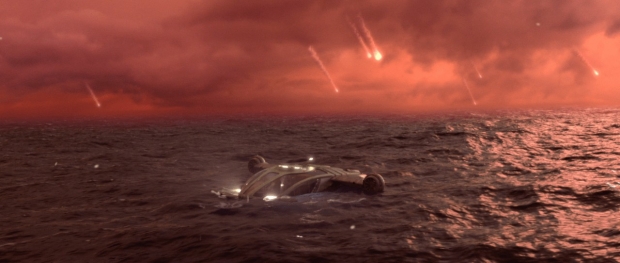
Oceanus: Act One is a short film that takes place in the year 2029, when an amazing breakthrough in whale-to-human communication is at hand. Before the final experiment can be conducted, marine biologist Dr. Erin Kendall (Megan Dodds) and her aquatic engineer husband Sam Jordan (Sharif Atkins) are caught in a catastrophic global disaster that separates them from each other and their spectacular underwater city, Oceanus.
“I’ve spent years developing this beyond Oceanus: Act One and I have all kinds of design work and artwork and production paintings,” says Morris. “I have the whole underwater city visualized for what it looks like inside.”
Also a fan of submarine films like The Hunt for Red October and Crimson Tide, Morris set out to create a story that would speak to a broader audience than the typical sci-fi theme.
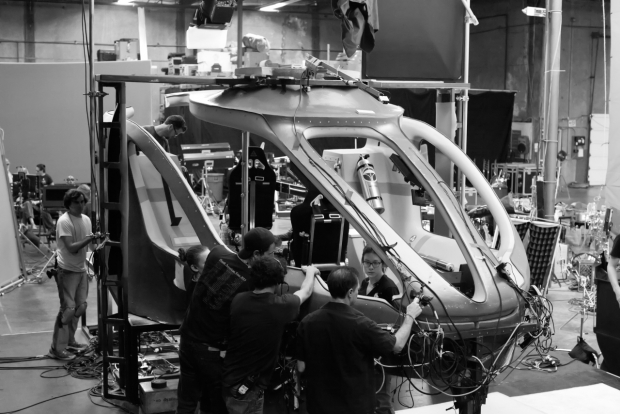
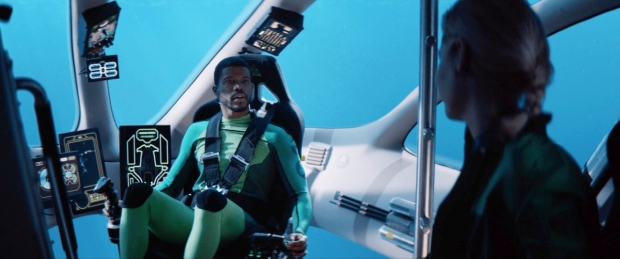
The short film is a hybrid of live-action, visual effects and animation; live-action acting was captured inside the tangible submarine set, but everything outside the vessel – the water, schools of fish, meteor showers, sunken airplanes, humpback whales, and the city of Oceanus itself – is all computer generated using Maya.
“Here’s the thing – most of us have seen the ocean,” he notes. “Most of us haven’t gone to space, but we’ve gone to the ocean. We’ve swam in it, scuba dived, or snorkeled. To find a way to bring that role to life, but in a futuristic context, I thought it would be more relatable to a a broader audience than the typical space stuff we see.”
“To me, Jurassic Park’s visual effects are better than the visual effects on a lot of the dinosaur movies we see now, and it’s because of the artists,” says Morris. “And what we pulled off with Oceanus was art. That was my goal with this film. Not to create some big, rip-roaring thing that was moving super fast, but really create something artistic and beautiful. We’ve had audience members tell us how pretty they think the film was. I think that makes it stand out, especially in this genre. It wasn’t just about having a bunch of things happen. It was about making this memorable and beautiful.”
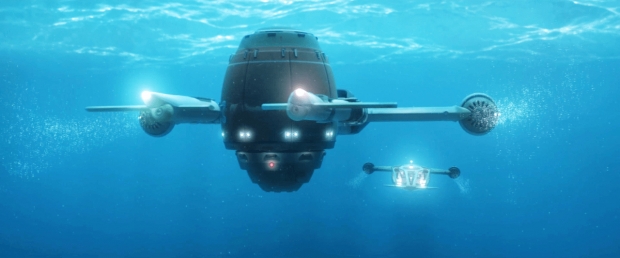
Following the successful premiere of Morris’ entirely animated short Parallel Man: Infinite Pursuit, Oceanus: Act One was showcased on Gunpowder & Sky’s subsidiary sci-fi streamer DUST in April. The film is now available to watch on YouTube (we have it embedded below) and, over the last two weeks, has received over 1.2 million views.
Morris has already begun fleshing out his vision for the show with his visual effects team.
“There is a scene where Dr. Kendall is talking with Commander Mitch Conrad, played by Bruce Davison, and a large school of fish swims by as she’s on the coms,” notes Morris. “I mean, how else would you do that other than spending crazy amounts of money to put this actor in a tank and buy a bunch of large fish?”
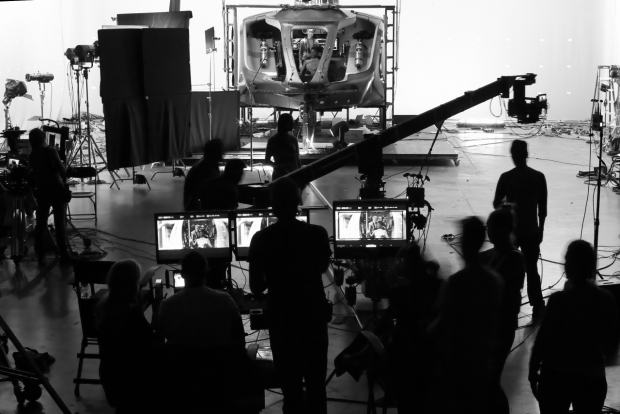
“I really wanted to make those feel old-school,” says Morris. “Almost like the 70s video game Asteroids. A lot of the stuff you see on those screens in Marvel films just makes it feel like there’s way too much going on. I don’t even know how an operator could understand it. So I thought, ‘Let’s go the opposite.’ And we made it really clean and simple and fun.”
“We’re plotting this out as an eight or ten episode TV series that will probably last for three seasons,” says Morris. “I’m actually planning to make whales bigger characters in the show, where Dr. Kendall pulls off her ability to talk to them and discovers they’re getting burned by the problem in the atmosphere from this asteroid impact. And her mission becomes figuring out how to save them. Our hope now is to be in production before the end of the year and have episodes out next year.”
Oceanus is not only a film set on expanding the storytelling territory of science fiction content, but also broadening the scope of what animation can do for a live-action story. Morris could have chosen to animate the film in its entirety, but instead says he saw an opportunity to show animation’s potential alongside live-action in the same film and, often, the same shot.
“I had a viewer who had seen Oceanus message me and say, ‘That 30 minutes was the first time in my entire life I liked science fiction,’” shares Morris. “It was the biggest compliment I’ve ever gotten in my career. And I feel like I did my job right.”
“There’s lots of space stuff, a fair amount of time travel, monsters, aliens, and robots,” says Morris. “We’re familiar with the tropes of sci-fi. The one place that I could think of that had not really been explored extensively was the ocean. Obviously, back in the 1950s, you had 20,000 Leagues Under the Sea. Then you had Voyage to the Bottom of the Sea from the 1960s. And then you had a trio of movies that happened in the mid to late 80s: The Abyss, Leviathan, and DeepStar Six. Out of those three, I thought The Abyss was the one that was just really cool and the idea of this near-future underwater environment.”

“Literally the only water in the entire film was a glass of water that the stagehand poured into the submarine when we opened the hatch,” says Morris. “And we knew we’d have to do lots of animation throughout the film, even incorporate it into scenes inside the sub, because I wanted these big windows on the submarine that look out into this ocean world. We had to go through extensive previs and a lot of planning, and then we coordinated our previs with actual practical effects on the stage.”
